Assume the following situation:
- the monorepo contains two artifacts in separate folders, say frontend and backend
- frontend developers are not capable of solving merge conflicts in backend code
- backend developers are not capable of solving merge conflicts in frontend code
- feature-branch based workflow where frontend and backend developers work in parallel on the same feature branch
The problem arises when changes (created by separate developers) on a feature branch conflict in both, backend and frontend code. A single developer (given the mentioned assumptions) is not able to conduct an update-merge on his own.

What is the best practice to resolve merge conflicts which span frontend and backend code? If the vertical feature-branch based workflow is the underlying problem, how would you improve this setup while sticking with the first three assumptions?